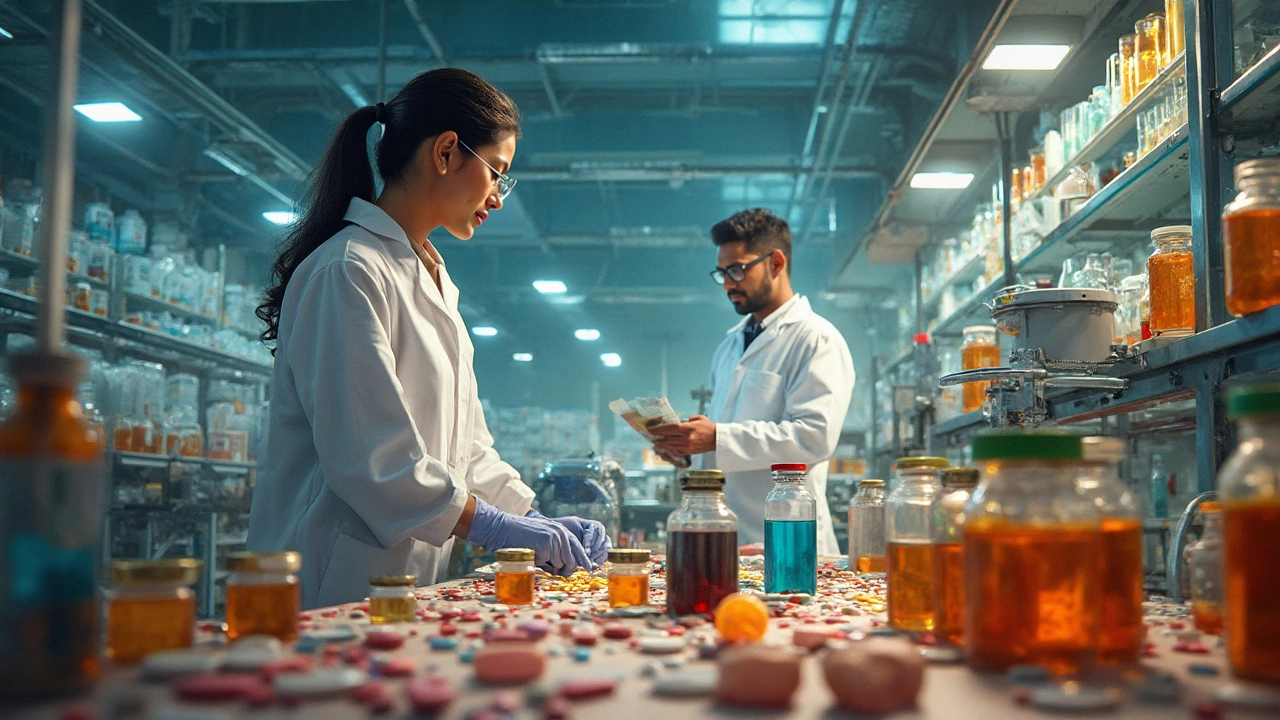Global Pharma: What’s Happening and Why India Matters
When you hear "global pharma," you’re really talking about a massive network of factories, labs, and regulators that span continents. It’s not just about pills on a shelf – it’s about how drugs are made, where the cheap‑but‑good ingredients come from, and which countries are setting the pace. If you’re curious about the real forces behind the medicines you use, this guide breaks it down in plain English.
Why India Leads the Global Pharma Game
India punches far above its weight in the drug world. Over a third of the world’s generic medicines are produced here, and that isn’t by accident. Low labor costs, a huge pool of skilled chemists, and an ever‑growing manufacturing capacity make the country a natural hub. The post “Why So Many Pharmaceuticals Are Made in India: Costs, Capacity, and 2025 Outlook” explains that the cost advantage comes from cheaper raw material sourcing and a regulatory environment that still encourages scale.
Another big factor is the API (active pharmaceutical ingredient) supply chain. Indian firms have mastered the art of making these core chemicals in massive batches, which keeps global drug prices down. This also means the U.S. FDA now inspects many Indian plants, raising quality standards while still leveraging the country’s cost edge.
Indian pharma giants like Sun Pharma, which tops the “Richest Pharma Company in India” list, are expanding their footprints abroad. They’re buying overseas brands, setting up R&D centers, and investing in advanced biologics – a sign that India is moving from generic mass‑production to high‑value innovation.
Key Trends Shaping Global Pharma
Even with India’s dominance, the whole sector is shifting. First, biologics and personalized medicine are growing fast. These drugs need specialized manufacturing lines, which pushes companies to upgrade facilities or partner with niche players.
Second, regulatory scrutiny is tightening worldwide. The U.S., Europe, and emerging markets are harmonizing standards, making it harder for low‑cost producers to cut corners. This drives a wave of quality certifications and digital tracking of batches.
Third, sustainability is becoming a buyer decision. Manufacturers are looking at greener solvents, waste‑reduction programs, and carbon‑neutral factories. The lean‑manufacturing principle of eliminating the “7 wastes” (as highlighted in the post “7 Wastes of Manufacturing”) is now a green‑tech mandate.
Finally, geopolitics play a role. Supply‑chain disruptions from pandemics or trade tensions have made companies think twice about relying on a single country. Some are diversifying to other hubs like China, Brazil, or Eastern Europe, but India’s sheer capacity keeps it in the mix.
What does all this mean for you? If you’re looking for affordable medicine, India will stay a key source. If you’re a business partner, expect higher quality requirements and more collaboration on innovation. And if you’re a job seeker, skills in API production, biotech, or regulatory affairs will be in high demand.
Bottom line: Global pharma is a fast‑moving field, and India is both a workhorse and an emerging innovator. Keep an eye on cost trends, regulatory changes, and the push toward greener, smarter factories – they’ll decide who leads the next decade of medicine production.

Pharma Giants: India's Role in the Global Market
Explore India's pivotal role as a leading player in the global pharmaceutical industry. Learn how India earned its reputation as the "Pharmacy of the World" through its cost-effective manufacturing and significant contributions to generic drugs. Discover key facts and insights about India's pharma sector, including its impact on healthcare worldwide and challenges faced. Understand why India continues to lead and innovate in the rapidly evolving field of pharmaceuticals.
